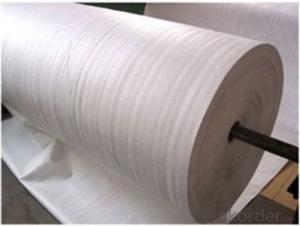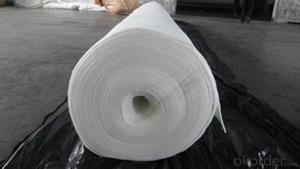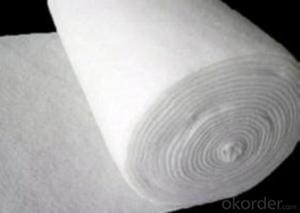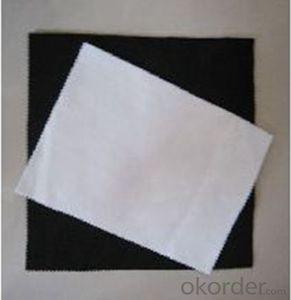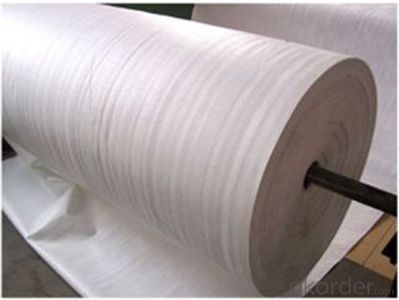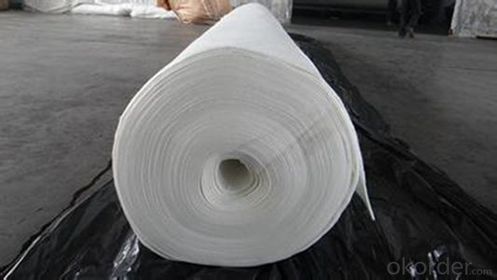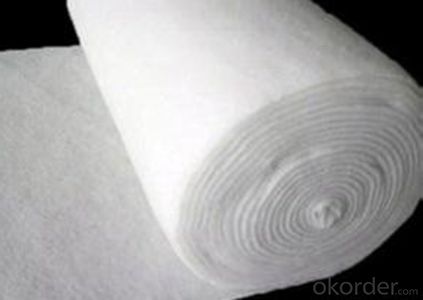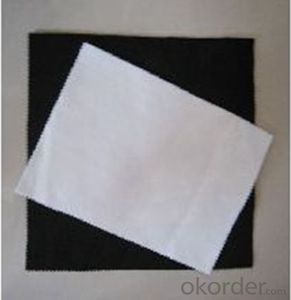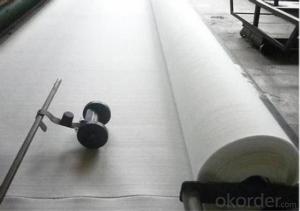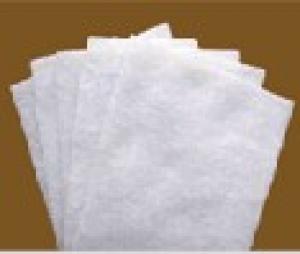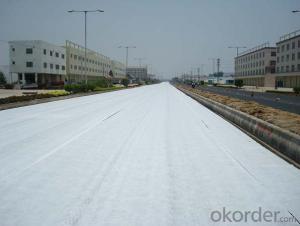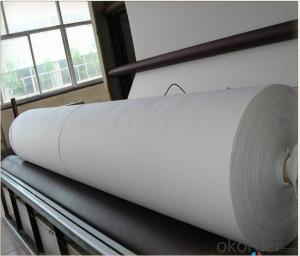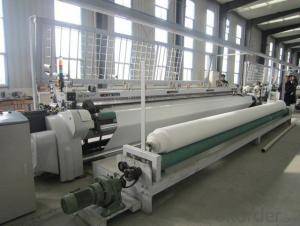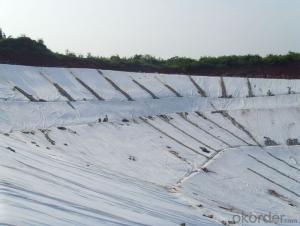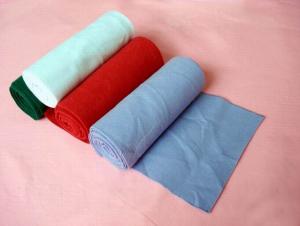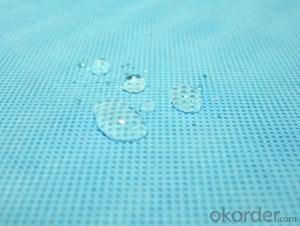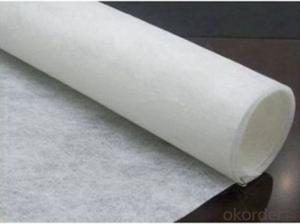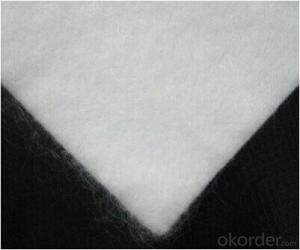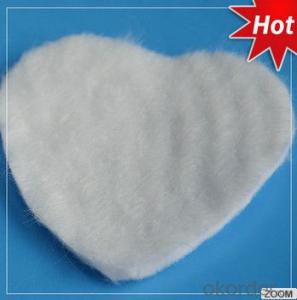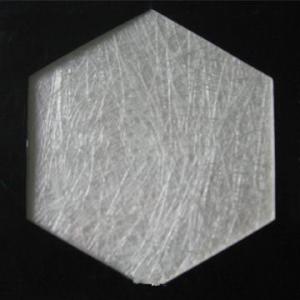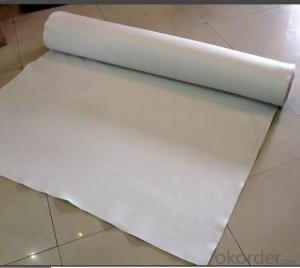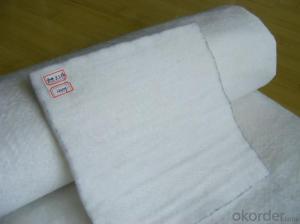Geotextile Plant PP Non-Woven Geotextile with Good Quality
- Loading Port:
- China main port
- Payment Terms:
- TT OR LC
- Min Order Qty:
- 5000 g/m²
- Supply Capability:
- 1000000 g/m²/month
OKorder Service Pledge
OKorder Financial Service
You Might Also Like
Specification
Quick Details
· Type: Geotextiles
· Place of Origin: Shandong, China (Mainland)
· Brand Name: Dageng
· Model Number: PP400g
· Geotextile Type: Non-Woven Geotextiles
· Color: White
· Thickness: 3mm
· Breaking Strength,kN/m ≥: 12.5
· Elongation at Break,%: 25-100
· CBR Mullen Burst Strength,kN ≥: 2.1
· Sieve Size O90(O95),mm: 0.07-0.2
· Tear Strength,kN ≥: 0.33
· Delivery Detail: About 15 days after signing the contract
· Minimum Order Quantity: 10000 Square Meter/Square Meters
· Supply Ability:50000 Square Meter/Square Meters per Day
· Payment Terms: L/C,T/T
· Packing : standard package or according to customer's needs
Specifications
Mterial :PP
Width: max :6m
Thickness:0.9mm-5.0mm
Weight:100g/sq.m-1000g/sq.m
.UV (Ultra Violet) Stabilized
High Chemical Resistance
Optimum Elongation
Staple fibers needle punched non woven geotextile
The geotextile is made of polypropylene staple fibers on cross-laying equipment and needle punched equipment.
Feature: It owns the advantages of acid and alkali resistance, erosion resistance, aging resistance, large strength, stable size, good filtrability etc.
Functions: It mainly applied in water conservancy, road and railway for strengthening, separation, reversed filter and drainage of projects
2)Filament non woven geotextile
Filament geotextile has features as follows: High strength, good capacity of elongation and high biology tolerance, alkali tolerance, acidity tolerance, weather resistance good filtration and fine drainage capacity etc. Alo it is of low cost, easy in construction and use effects.
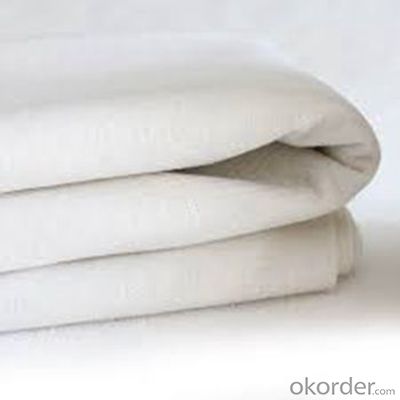
Quality assurance
1.On a regular basis or as per your request,we entrust national testing agencies to conduct quality inspections
2. Strictly in accordance with the ISO9001-2008 international quality system standard,we monitor and manage the whole process throughout production,quality testing,and measurement to ensure product quality
3. For quality-related construction delay or substandard construction(except for damage or losses due to customer’s responsibility or irresistible natural disasters),we have refunding,replacement,and repair services.We will respond to customers’ feedbacks on quality issues within 24 hours.
After-sales service
1.In order to provide customers with comprehensive technical support,we will provide technical and other related information upon request in a timely manner.
2.In required,we will appoint specialized technicians to the construction site to give technical trainings to construction people,and offer technical guidance throughout the whole construction process.
3.For damage due to shipment and delivery,after we receive the complaint,we will check the issure through provided pictures and videos.If our responsibility is confirmed,we wil offer free replacement.
4.When the construction is completed,as your request,our technical staff may participate in the final acceptance.
FAQ:
Q: What kind of payments does jenor support?
A: T/T, L/C, Cash are accepted.
Q: Do you charge for the samples?
A: Accordeing to our company policy, the samples are free, we only charge the freight fee. And we will return the freight fee during the next order.
Q: Can you produce according to customers' design?
A: Sure, we are professional manufacturer, OEM and ODM are both welcome.
Q: Do you have other products?
A: Yes, please check the pictures:
- Q: How do geotextiles aid in the reduction of pore water pressure?
- Geotextiles aid in the reduction of pore water pressure by providing a barrier that allows water to flow through while preventing the migration of fine particles. This allows for efficient drainage, preventing the build-up of excess pore water pressure within the soil or ground, ultimately reducing the risk of soil liquefaction or instability.
- Q: What are the key differences between woven and nonwoven geotextiles?
- The key differences between woven and nonwoven geotextiles lie in their manufacturing processes and physical properties. Woven geotextiles are created by interlacing individual yarns or fibers in a crisscross pattern, resulting in a stable and strong fabric. On the other hand, nonwoven geotextiles are manufactured by bonding or felting fibers together using mechanical, thermal, or chemical processes, resulting in a fabric with random fiber orientation. Woven geotextiles typically have higher tensile strength and puncture resistance due to their interlocked yarns, making them suitable for applications that require structural stability and load distribution. They are commonly used in road construction, erosion control, and soil stabilization projects. Nonwoven geotextiles, while generally having lower strength properties compared to their woven counterparts, offer advantages such as filtration, drainage, and separation functions. They are commonly used for filtration and separation in drainage systems, as well as in erosion control, landscape fabric, and geocomposite applications. Overall, the choice between woven and nonwoven geotextiles depends on the specific project requirements, such as load-bearing capacity, filtration needs, and budget considerations.
- Q: What are the standards and regulations for geotextile products?
- The standards and regulations for geotextile products vary depending on the country and region. However, some common standards and regulations include ASTM D4439 for geotextile testing, ASTM D5261 for geotextile installation guidelines, and ISO 10318 for geotextile specifications. Additionally, in many countries, geotextile products must meet specific requirements set by government agencies or industry organizations to ensure their quality, durability, and environmental impact.
- Q: Are geotextiles resistant to mold and mildew?
- Yes, geotextiles are generally resistant to mold and mildew due to their synthetic composition and the fact that they do not retain moisture.
- Q: What are the different geotextile testing parameters?
- There are several different geotextile testing parameters that are used to evaluate the performance and quality of geotextiles. Some of the common parameters include tensile strength, puncture resistance, tear strength, permeability, apparent opening size, and UV resistance. These tests help determine the suitability of geotextiles for specific applications and ensure their durability and effectiveness in various geotechnical and civil engineering projects.
- Q: Can geotextiles be used for erosion control in river levees?
- Yes, geotextiles can be used for erosion control in river levees. Geotextiles are specifically designed to stabilize soil and prevent erosion, making them an effective solution for reinforcing river levees and protecting them from erosion caused by water flow.
- Q: Geotextile strength index with interpolation method how to calculate? Then geotextile variation, I do not quite understand, pro, if you know whether to tell me Oh! Very anxious
- Geotextile strong indicators of the interpolation method: For example: geotextile 150 grams of breaking strength is 4.5KN, geotextile 100 grams of breaking strength is 2.5KN, then the geotextile 130 grams of broken strength is how much? The calculation method is: 4.5KN-2.5KN = 2KN (that is, 50 grams of geotextile strength) 2KN by 50 grams multiplied by 30 grams is equal to 1.2KN then geotextile 130 grams of breaking strength is 3.7KN.
- Q: Pvc tube outsourcing geotextile, how to count how much geotextile
- Calculate the circumference of the bottom of the pipe by the diameter of the pipe, and the length of the pipe is multiplied by the length of the pipe, which is the area of the geotextile. Huazhi geotechnical materials manufacturers to answer your questions
- Q: How do geotextiles help with erosion control in riverbanks?
- Geotextiles help with erosion control in riverbanks by acting as a barrier and stabilizing the soil. They prevent the soil particles from being washed away by the flowing water, while still allowing water to pass through. This helps to reduce the velocity of the water, minimizing the impact of erosive forces and protecting the riverbank from further degradation.
- Q: Can geotextiles be used in underground drainage systems?
- Yes, geotextiles can be used in underground drainage systems. They are commonly used as a filtration and separation layer in these systems to prevent the migration of fine particles and clogging of pipes. Geotextiles provide excellent soil retention and drainage properties, making them an effective solution for underground drainage systems.
Send your message to us
Geotextile Plant PP Non-Woven Geotextile with Good Quality
- Loading Port:
- China main port
- Payment Terms:
- TT OR LC
- Min Order Qty:
- 5000 g/m²
- Supply Capability:
- 1000000 g/m²/month
OKorder Service Pledge
OKorder Financial Service
Similar products
Hot products
Hot Searches
Related keywords
